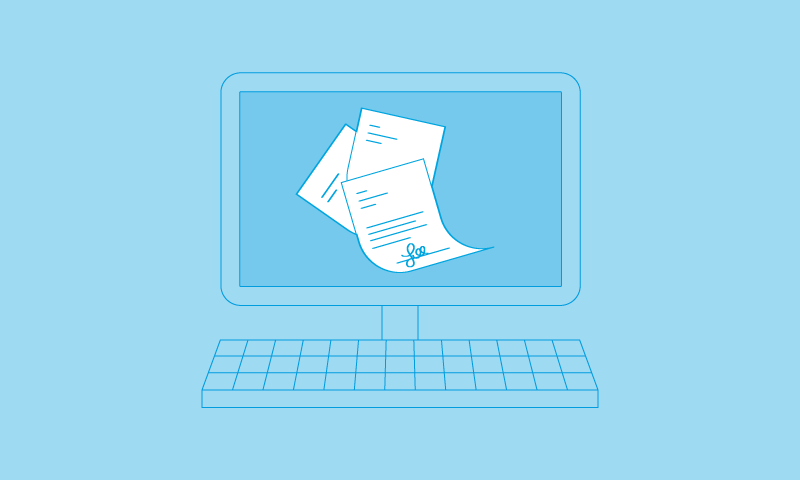25 June 2018
The Making Tax Digital (MTD) reforms represent a fundamental and unprecedented change to the UK tax system which will ultimately impact all UK taxpayers. VAT is now at the forefront of the plans which HMRC has for MTD although the MTD changes are expected, in time, to apply to all the main taxes.
For most VAT registered entities subject to MTD, the way in which VAT accounting data will be required to be recorded and submitted to HMRC will change significantly. HMRC has identified that approximately £4bn per year is lost in simple VAT mistakes alone and has stated that it expects MTD to assist in reducing the errors made and thereby reduce the VAT lost as a result of businesses failing to take reasonable care. It is apparent, however, that many taxpayers do not yet fully understand what MTD will mean for them.
In order to provide some clarity and help you understand how these changes will affect your business, we have sought in this document to address a number of the common misconceptions concerning MTD.
1. Has MTD been delayed?
Whilst MTD has been delayed for other taxes until at least 2020, it is a requirement for all VAT registered businesses with a taxable turnover above £85,000 per annum to submit their VAT returns digitally, using MTD compatible software, from April 2019. This requirement applies to charities, schools, public bodies, sole traders and partnerships, and not just corporate bodies.
2. Don’t I already submit my VAT return online?
Yes, you probably do, but from April 2019 the current HMRC online portal will close for businesses with a taxable turnover above £85,000 and they will need to submit their VAT return figures directly from their accounting system or via ‘bridging’ software.
3. OK, so I just need a new link to the HMRC gateway then?
Unfortunately not, MTD means that VAT registered businesses with taxable turnover over the £85,000 threshold will need to submit their VAT returns digitally using MTD compatible software. However, MTD also means businesses will need to keep their records in a digital format which enables information to be provided to HMRC directly from their accounting system or via bridging software, through an application programme interface (API) which can also receive information from HMRC.
4. I keep my records manually. Will this need to change?
Yes. If you are a VAT registered business with taxable turnover over the £85,000 threshold you will need to keep digital records.
5. I keep my records on a spreadsheet. Is that OK?
Potentially yes. Your spreadsheet could be considered as MTD compatible software. But, if you use a spreadsheet to record all your transactions then the spreadsheet needs to be API enabled so that the VAT return data can be submitted directly from the spreadsheet to HMRC, or digitally linked to bridging software which submits the VAT return data directly to HMRC via an API.
6. Can I use spreadsheets for calculating adjustments?
Where you rely upon a spreadsheet for carrying out adjustments such as for partial exemption purposes then you can manually enter the output from the spreadsheet into the accounting records.
7. My software provider or third parties will provide the API link to HMRC, so is that all I need to do?
Many accounting software package providers will provide the API links and there will also be third party bridging software solutions. However, you will still need to keep digital records of the underlying transactions.
8. What other details will I need?
Under MTD you will need to keep digital records summarising supplies you make including the time of supply, the value of supply and the rate of VAT charged. For supplies received you will need to record the time of supply, the value of the supply and the amount of input tax you will claim. You will also need to retain other information, such as reverse charges on imported services, acquisition VAT paid on supply of goods from other member states and details of any error or corrections adjusted.
9. Do I have to provide HMRC with any more information than I do at present?
For VAT returns submitted on or after 1 April 2019, you will be required to submit the information which completes the existing nine boxes on the VAT return digitally using MTD compatible software. At some point in the future, you can also choose to voluntarily submit supplementary data on a periodic basis, such as a summary of the total supplies made at different VAT liabilities and details of any VAT that you cannot reclaim.
10. Should I submit the supplementary data when this becomes an option in the future?
HMRC has stated that when deciding whether to carry out a VAT inspection on a business, it will take into account whether the business has provided supplementary data. If, on review of the supplementary data, there are no queries, HMRC is less likely to carry out a VAT inspection.
11. I think I do capture this information, but I am not sure I get it right all the time. What can I do?
Confirming how you determine tax on transactions is key to being MTD compliant. If you use a degree of automation, such as tax codes set at customer location level or product level these should be verified and confirmed as being accurate.
If the VAT coding is set by a bookkeeper, accounts ledger clerk or similar, they should receive periodic training and we would advise sample checks as part of the VAT return procedures. Over time we expect HMRC will start to look for inconsistencies in supplementary data and raise queries with the aim of collecting more tax.
12. My accountant submits my VAT returns. Will that still be OK?
Provided that your accountant uses their own MTD compatible software to submit your VAT returns to HMRC and is registered as your tax agent, then yes they can. However, you will need to provide them with access to your accounting data through digital links.
13. Can I become MTD compliant before 1st April 2019, so I can make sure I am fully compliant and can test the software?
Yes, you can – HMRC is running an MTD pilot programme, from 1 April 2018, and you can request to submit your VAT return details digitally. The pilot programme is initially restricted to a limited number of businesses with straightforward VAT profiles. It will, however, be expanded in the run up to 1 April 2019 to allow greater numbers and more complex businesses to apply.
14. What if I experience problems and I do not meet the new MTD requirements by 1 April 2019?
There must be a digital link between your accounting records and HMRC from the outset at 1 April 2019. HMRC has, however, confirmed that there will be a ‘soft landing’ period between April 2019 and March 2020, in which there will be no financial penalties for record keeping failures.
If you would like the opportunity to discuss how MTD will impact upon your business and understand the steps you will need to take to ensure that you are fully MTD compliant by 1 April 2019, please contact your usual RSM VAT adviser to arrange a meeting or contact Ian Carpenter.




